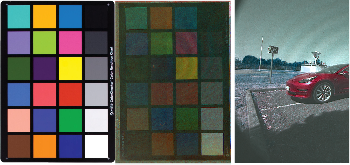
The exploration of the Solar System using unmanned probes and rovers has improved the understanding of our planetary neighbors. Despite a large variety of instruments, optical and near-infrared cameras remain critical for these missions to understand the planet’s surrounding, its geology but also to communicate easily with the general public. However, missions on planetary bodies must satisfy strong constraints in terms of robustness, data size, and amount of onboard computing power. Although this trend is evolving, commercial image-processing software cannot be integrated. Still, as the optical and a spectral information of the planetary surfaces is a key science objective, spectral filter arrays (SFAs) provide an elegant, compact, and cost-efficient solution for rovers. In this contribution, we provide ways to process multi-spectral images on the ground to obtain the best image quality, while remaining as generic as possible. This study is performed on a prototype SFA. Demosaicing algorithms and ways to correct the spectral and color information on these images are also detailed. An application of these methods on a custom-built SFA is shown, demonstrating that this technology represents a promising solution for rovers.